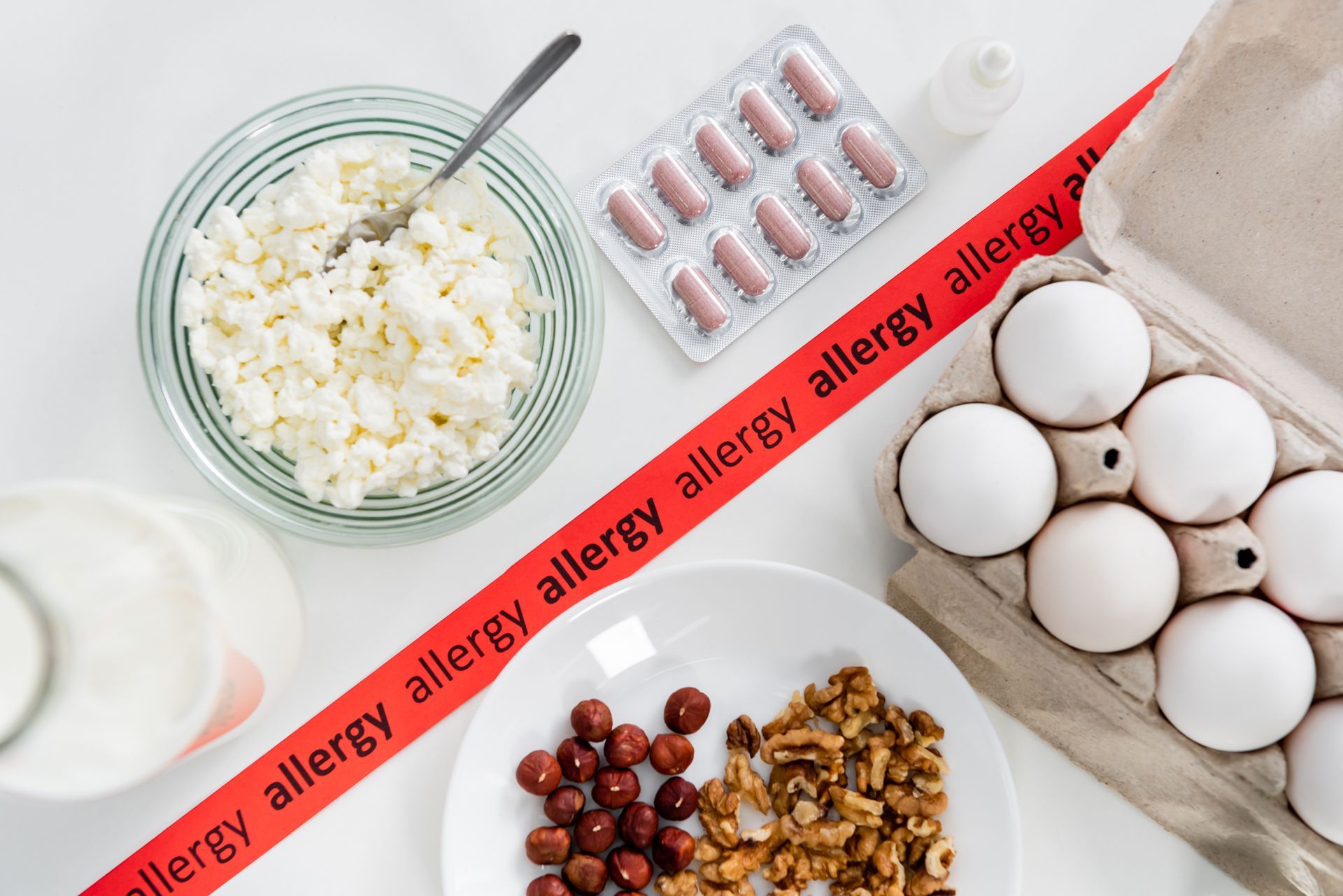
Understanding the Humidity-Mold Connection
When maintaining a healthy living environment, few things are as crucial as keeping humidity levels in check and preventing mold growth. This dynamic duo can wreak havoc on your home, causing structural damage and posing serious health risks to you and your family.
This blog will explore the insidious tandem of humidity and mold and provide practical tips on safeguarding your home.
Does Humidity Cause Mold?
Humidity and mold share an intimate relationship. Mold thrives in damp, humid conditions, making certain parts of your home the perfect breeding ground. As humidity levels rise, so does the likelihood of mold growth. This phenomenon can occur in your bathrooms, basements, kitchens, and even in hidden, neglected corners.
Health Risks
On top of the aesthetic and structural damage mold can cause, it poses significant health risks. Accidental exposure to mold spores can trigger allergies, respiratory disorders, and even more severe health problems in some individuals. Young adults, older people, and those with compromised immune systems are particularly vulnerable.
Now that we understand the stakes, let's delve into some practical steps to protect your home from this toxic duo.
How to Keep Mold From Growing
Invest in a Dehumidifier
A dehumidifier is a powerful tool in your arsenal against excess humidity. It extracts moisture from the air, creating an environment less conducive to mold growth. Be sure to choose the right size for your space and place it in areas prone to high humidity, such as basements, bathrooms, and laundry rooms.
Set Up Adequate Ventilation
Proper ventilation is crucial in preventing humidity buildup. Ensure your home gets adequate airflow by installing exhaust fans in the lavatory and kitchens and keeping windows open whenever possible. Consider installing vents to promote air circulation in attic or crawl spaces.
Seal Leaks and Cracks
Leaks and cracks in your home's foundation, walls, or roof significantly contribute to excess moisture. Regularly maintain any damage to ensure that water stays where it belongs – outside.
Monitor Indoor Humidity Levels
Invest in a quality humidity monitor (hygrometer) to monitor indoor moisture levels. Target a relative humidity level between 30–50%. If levels consistently exceed this range, it's time to take action.
Use Mold-Resistant Products
When renovating or remodeling, opt for materials designed to resist mold growth. Mold-resistant drywall, paints, and insulation deter mold growth, providing an added layer of protection.
Maintain a Clean, Dry Environment
Regular cleaning and maintenance play a crucial role in preventing mold. Be vigilant in drying wet areas promptly, especially in bathrooms and kitchens. Pay extra attention to areas where water accumulates, such as shower curtains, grout lines, and window sills.
Use a High-Efficiency Particulate Air (HEPA) Filter
A HEPA filter is an air filtration device that traps specks such as mold spores, dust, pollen, and smoke. These filters are commonly used in air purifiers and vacuum cleaners to improve indoor air quality. Medical facilities often use them to prevent the spreading of airborne diseases and contaminants.
Understanding the Link Between Mold and Humidity
Silent but deadly, humidity and mold can cause disaster in your home and health if left unchecked. Implement these practical strategies, and you can maintain a healthy, mold-resistant environment for you and your family.
Prevention is critical, so start proactively monitoring humidity levels and addressing any signs of excess moisture. With these steps, you'll ensure a safer and healthier living space, providing peace of mind to every occupant.
FAQs
What causes humidity in a home?
Humidity in a home is due to various factors such as weather conditions, poor ventilation, activities like cooking and showering, and even indoor plants. The geographical location of the house significantly influences it, too.
Why is humidity a concern for homes?
Excessive humidity can lead to the growth of mold and mildew, which can damage parts of your home and pose health risks to the occupants. It can also cause discomfort, especially in warmer months.
How can I measure humidity levels in my home?
Use a hygrometer designed to measure humidity levels. They are widely available, and you can find them in hardware stores or online.
What is an ideal indoor humidity level?
The ideal indoor humidity level is between 30–50%. This range helps prevent mold growth and maintain a comfortable living environment.
What are some common signs of high humidity in a home?
Common signs of high humidity include condensation on windows, musty odors, peeling paint or wallpaper, and the presence of mold or mildew on surfaces.
How to prevent mold in humid climates?
There are several ways to reduce humidity:
- Use exhaust fans in bathrooms and kitchens.
- Ensure a well-ventilated home.
- Use a dehumidifier, especially in areas prone to high humidity.
- Fix any leaks or water damage promptly.
How to prevent mildew growth in my home?
To prevent mildew growth, you should:
- Control indoor humidity levels.
- Ensure proper ventilation.
- Address water leaks and damage immediately.
- Clean and maintain your home regularly.
What areas of my home are most susceptible to mold growth?
Areas with high moisture levels are most susceptible to mold growth. These places include bathrooms, kitchens, basements, and areas near water sources like washing machines and sinks.
Can I paint over mold?
Paint does not affect mold. It's essential to remove the mold first using appropriate cleaning methods and then address the underlying cause of moisture.
When should I seek professional help for mold removal?
You should seek professional help if the affected area is large (typically over 10 square feet), if the mold is causing health issues, or if it's in hard-to-reach or sensitive areas like ductwork.
At what humidity levels does mold grow?
When indoor relative humidity (RH) is below 60 percent and there are no cold-condensing surfaces, there won't be enough moisture in materials for mold to grow. However, if the RH stays above 70 percent indoors for a prolonged period, it will likely lead to mold growth.
How to prevent black mold?
Black mold is a hazardous mold that can cause serious health issues and be challenging to eliminate once it takes hold. The best way to prevent black mold is to keep your home dry and well-ventilated.
Protect Yourself From Mold Allergies With Our Expert Treatment!
If you're searching online for "Allergist Tampa," "Tampa allergy," "Tampa allergist," "Allergist Tampa Fl," this is the right page for you!
Advanced Allergy and Asthma Care offers customized allergy treatment plans based on your needs. Our board-certified allergy experts use proven methods to keep you protected against asthma and allergies due to molds and other allergens.
To book an appointment that fits your schedule, dial(727) 544-8100 or (813) 476-3394.
You can choose your preferred clinic locations
here.
New Port Richey
Bldg. 5
New Port Richey, FL 34655
Hours:
Monday : 8:30 AM–6 PM
Tuesday : Closed
Wednesday : 8:00AM–7:00 PM
Thursday : Closed
Friday : Closed
Saturday : Closed
Sunday : Closed
South Tampa
Hours:
Monday : 8 AM–6 PM
Tuesday : Closed
Wednesday : 9 AM–
6:00 PM
Thursday : Closed
Friday : Closed
Saturday : Closed
Sunday : Closed
Pinellas Park
Prestige Park Medical Building
Hours:
Monday : Closed
Tuesday : 8 AM–7:00 PM
Wednesday : Closed
Thursday : 8 AM–6 PM
Friday : Closed
Saturday : Closed
Sunday : Closed
Dunedin
2323 Curlew Rd
Unit 6D
Dunedin, FL 34698
Hours:
Monday : Closed
Tuesday : 12 PM –6 PM
Wednesday : Closed
Thursday : Closed
Friday : 8 AM–4 PM
Saturday : Closed
Sunday : Closed
Westchase
Hours:
Monday : Closed
Tuesday : Closed
Wednesday : Closed
Thursday : 10 AM–5 PM
Friday : Closed
Saturday : Closed
Sunday: Closed
New Port Richey
Hours:
Monday : 8:30 AM–6 PM
Tuesday : Closed
Wednesday : 8:30AM–6:30 PM
Thursday : Closed
Friday : Closed
Saturday : Closed
Sunday : Closed
South Tampa
Hours:
Monday : 8 AM–6 PM
Tuesday : Closed
Wednesday : 8AM–6 PM
Thursday : Closed
Friday : Closed
Saturday : Closed
Sunday : Closed
Pinellas Park
Prestige Park Medical Building
Hours:
Monday : Closed
Tuesday : 8 AM–6:30 PM
Wednesday : Closed
Thursday : 8 AM–6 PM
Friday : Closed
Saturday : Closed
Sunday : Closed
Dunedin
Hours:
Monday : Closed
Tuesday : 12–6 PM
Wednesday : Closed
Thursday : Closed
Friday : 8 AM–4 PM
Saturday : Closed
Sunday : Closed
Westchase
Hours:
Monday : Closed
Tuesday : Closed
Wednesday : Closed
Thursday : 10 AM–5 PM
Friday : Closed
Saturday : Closed
Sunday: Closed
Hours are subject to change. You must have a scheduled appointment. No walk-ins.




